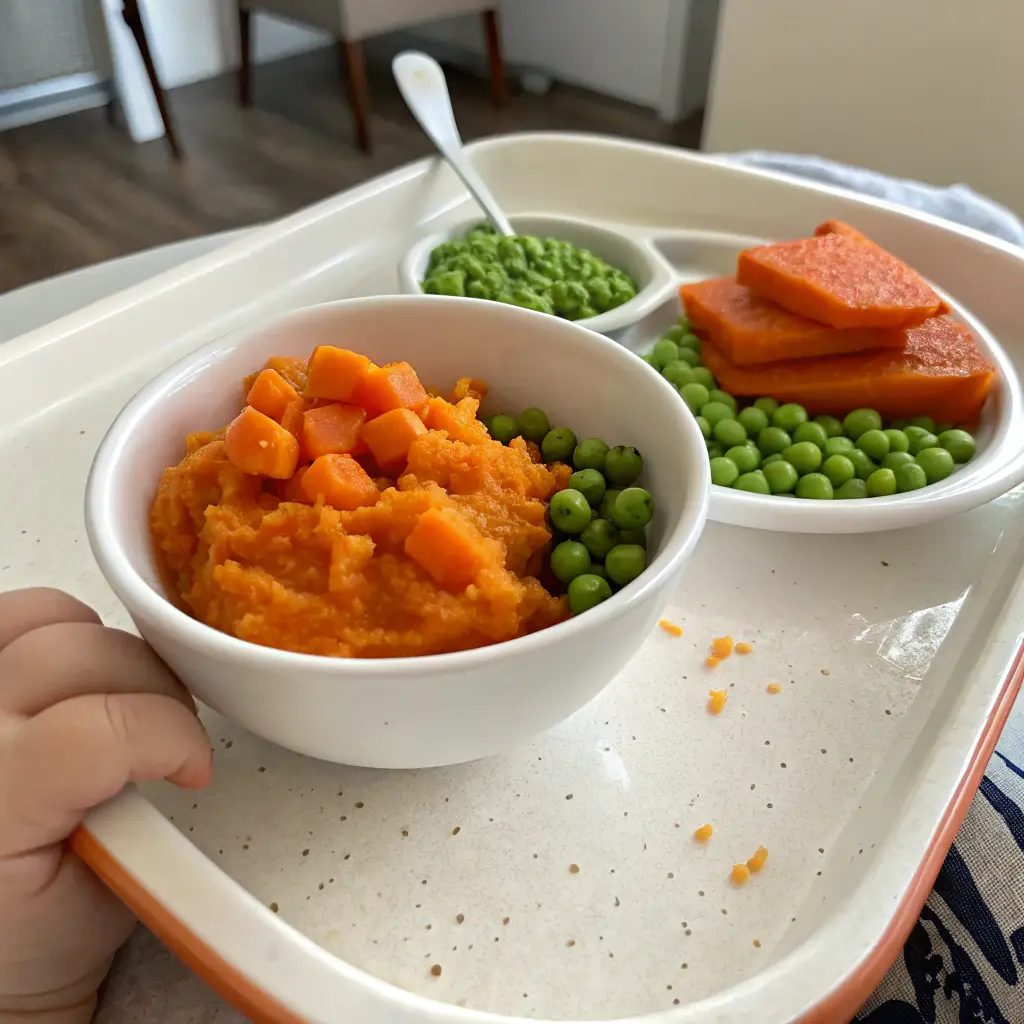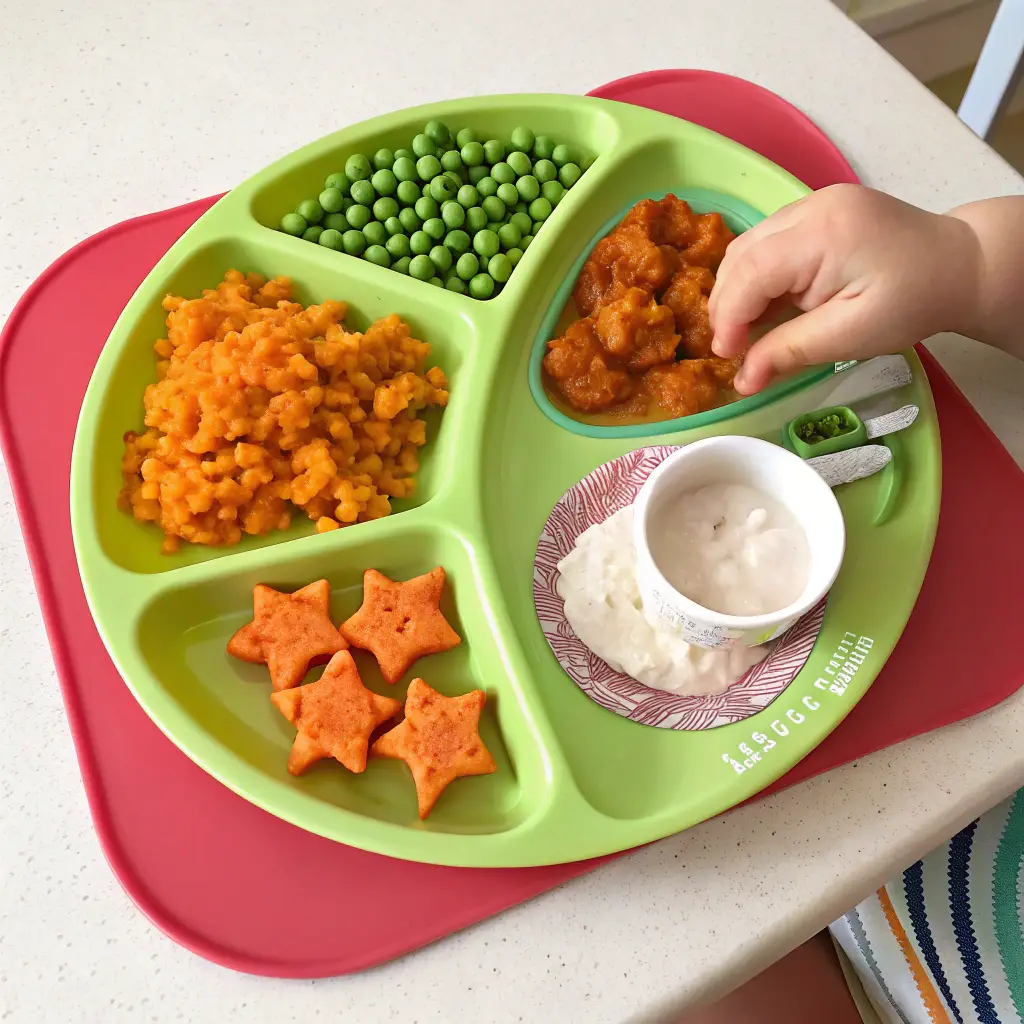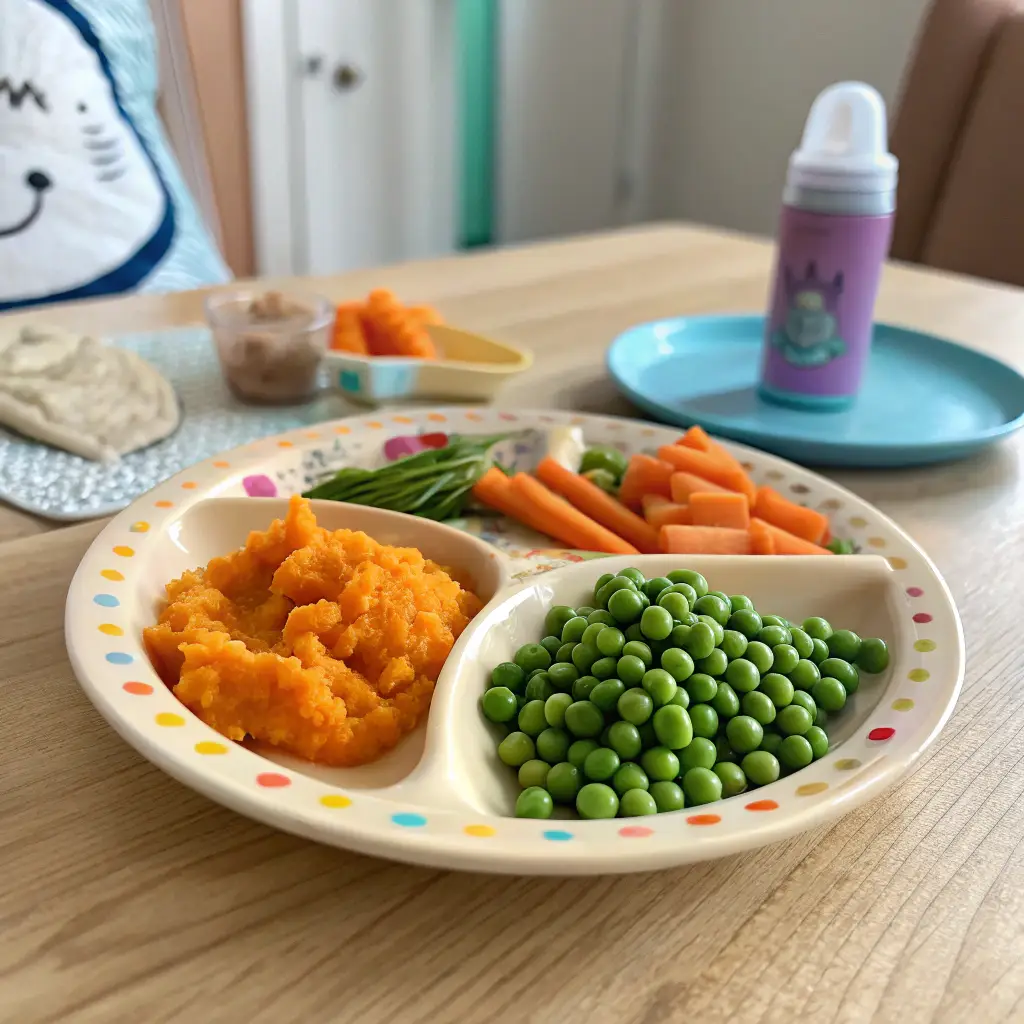Getting toddlers to eat their veggies can feel like a battle—but it doesn’t have to be. This guide is packed with practical tips and evidence-based insights for parents who want to introduce and maintain a healthy relationship between their toddlers and vegetables. From identifying the best vegetables for toddlers to clever ways to encourage picky eaters, we’ll explore what works, what doesn’t, and how to build lasting healthy habits.
Don’t miss our toddler-friendly meal ideas for more inspiration.
Table of Contents
PART 1: Why Vegetables Are Essential for Toddlers
The Health Benefits of Vegetables for Toddlers
Vegetables for toddlers aren’t just about filling their plates—they’re crucial for growth and development. These colorful foods are packed with essential vitamins like A, C, and K, as well as fiber and antioxidants that support immunity, digestion, and bone health. Toddlers who eat a variety of vegetables are more likely to meet daily nutrient needs without the need for supplements.
Building a Foundation for Lifelong Healthy Eating
Introducing vegetables early sets the tone for your child’s food preferences. When toddlers are exposed to a range of veggie textures and flavors, they become more open to healthy eating as they grow. Discover great ideas like sweet potato pancakes to start this journey. The earlier the exposure, the easier it becomes to make veggies a staple in their meals.
PART 2: What Are Good Vegetables for Toddlers?
Easy-to-Digest Vegetables Toddlers Love
When choosing vegetables for toddlers, focus on those that are naturally soft or easy to steam until tender. Some of the best veggies include sweet potatoes, carrots, green peas, zucchini, and butternut squash. These are rich in nutrients and offer mild, sweet flavors toddlers often enjoy. Sweet potatoes are loaded with vitamin A and fiber, while peas offer a good dose of protein and iron—both essential for a growing body.
Green beans, broccoli florets (steamed until very soft), and avocado slices also make excellent choices. Avocados, although technically a fruit, are nutrient-dense and packed with healthy fats that support brain development. Don’t miss our vegetables to eat with avocado toast for fun pairing ideas toddlers might actually crave.
Texture and Flavor Profiles Toddlers Prefer
Toddlers are extremely sensitive to texture and taste. Soft, mashable, and slightly sweet vegetables tend to go over best. Avoid overly fibrous or bitter veggies at first like raw spinach or kale unless they’re blended into toddler-friendly recipes. Mild vegetables like cauliflower, parsnips, or cooked pumpkin are also great for sensory acceptance.
Presentation matters too. Instead of large chunks, serve veggies in bite-sized pieces or fun shapes. Mix cooked carrots into mashed potatoes or sneak pureed spinach into mac and cheese. Combining familiar foods with new vegetables helps bridge the gap and reduces mealtime resistance.
Check out our toddler lunch ideas for more options that sneak in vegetables without a fuss. Over time, introducing a wide range of vegetables in fun, accessible ways not only improves nutrition but helps toddlers build comfort and curiosity around new foods.
PART 3: The Best First Vegetable for Babies and Toddlers
Soft Starter Veggies: Carrots, Peas, and Sweet Potatoes

When it comes to introducing the first vegetables to babies and young toddlers, simplicity is key. Choose soft, naturally sweet vegetables that are gentle on developing digestive systems and easy to mash or puree. Three of the best starter vegetables are sweet potatoes, carrots, and green peas.
Sweet potatoes are a parent favorite because of their creamy texture, mild sweetness, and high content of beta-carotene (which converts to vitamin A). Carrots, when steamed or boiled until soft, offer a subtle flavor that many little ones find appealing. Peas are another excellent choice—they’re rich in fiber and protein, and their natural sweetness makes them toddler-friendly.
Introducing just one vegetable at a time helps you monitor for any potential allergic reactions and also gives toddlers a chance to get used to individual flavors and textures.
Steamed, Pureed, or Mashed? Choosing the Right Form
For babies transitioning to solid foods and younger toddlers (6–18 months), texture plays a major role in acceptance. Begin with smooth purees, then move toward mashed or finely chopped textures as their chewing skills develop. Steaming is one of the best cooking methods—it preserves nutrients while softening the vegetable just enough for easy consumption.
To make veggie introduction fun, mix small portions with familiar foods. For example, combine mashed sweet potatoes with a bit of breast milk or formula for comfort. You can also blend peas into oatmeal or rice porridge.
Looking for inspiration? Try our recipe ideas for healthy toddler meals that incorporate first vegetables in creative ways. With patience and consistency, toddlers can gradually transition from soft veggie purees to chunkier bites and eventually to loving veggies in their natural form.
PART 4: How Much Vegetables Should a Toddler Eat Daily?
Age-Based Vegetable Portion Recommendations
One of the most common concerns parents have is whether their toddler is eating enough vegetables. According to pediatric nutrition guidelines, toddlers aged 1 to 3 should consume about 1 to 1.5 cups of vegetables per day. This can be spread across meals and snacks and includes a mix of raw, cooked, mashed, or blended veggies.
Since toddlers have small stomachs, it’s best to offer vegetables in small portions throughout the day instead of expecting them to eat a full serving in one sitting. A few tablespoons at each meal can quickly add up to the daily goal.
According to the CDC’s Infant and Toddler Nutrition guidelines, introducing vegetables early supports healthy growth and sets the stage for lifelong dietary habits.
Sample Vegetable Intake Chart for Toddlers (12–36 Months)
| Meal Time | Suggested Veggie Option | Portion Size |
|---|---|---|
| Breakfast | Mashed sweet potatoes | 2 tablespoons |
| Lunch | Steamed peas or green beans | 1/4 cup |
| Snack | Carrot sticks (soft-cooked) | 2–3 sticks |
| Dinner | Mixed veggie pasta or soup | 1/3 to 1/2 cup |
Don’t miss our easy frozen cauliflower rice guide for a great way to bulk up veggie servings in meals toddlers already enjoy. By offering variety, smaller portions, and being consistent, you’re setting up a solid foundation for healthy eating habits.
PART 5: How to Get Toddlers to Eat Vegetables
Fun Ways to Serve Vegetables to Picky Eaters

Picky eating is a normal phase for many toddlers, but that doesn’t mean you have to give up on vegetables. One of the most effective ways to encourage toddlers to eat veggies is to make them fun and visually appealing. Try cutting veggies into star or heart shapes, using colorful silicone cupcake liners to serve them, or arranging them into smiley faces or rainbow plates.
Another strategy is to serve vegetables alongside foods they already love. Add finely chopped spinach to scrambled eggs, fold cooked carrots into mini quesadillas, or stuff peas into a cheesy pasta. The more familiar the dish, the easier it is to slide in vegetables without resistance.
Letting toddlers dip veggies in their favorite sauce—like hummus, yogurt, or mild ranch—can also encourage them to try new flavors. Dips turn eating into a sensory experience and give toddlers a sense of control, which can reduce food anxiety.
Using Dips, Smoothies, and Colors to Boost Interest
Kids eat with their eyes first. Smoothies are a sneaky, xfent-packed way to include spinach, carrots, or even cauliflower without toddlers noticing. Combine with banana, berries, or yogurt to mask the veggie flavor.
Color also matters. Bright orange carrots, deep green peas, or yellow squash catch a toddler’s eye. Rotate veggies by color each day and let them pick from a “veggie rainbow.” This boosts curiosity and makes eating feel like play.
Check out these toddler lunch ideas that sneak veggies into familiar meals, keeping things delicious and low-stress at the table.
PART 6: Creative Vegetable Recipes for Toddlers
Toddler-Friendly Veggie Recipes for Breakfast, Lunch, and Dinner
Sometimes, getting toddlers to eat vegetables is all about the recipe. With a little creativity, even spinach can become a favorite. For breakfast, try sweet potato pancakes—a naturally sweet and soft option toddlers love. At lunch, whip up veggie-loaded quesadillas with mashed black beans, carrots, and shredded zucchini.
Dinner can feature comforting options like veggie mac and cheese, where you blend cooked cauliflower into the cheese sauce. Or serve baked veggie nuggets made from broccoli and sweet potatoes—a healthy twist on chicken nuggets.
Discover great ideas like sweet potato pancakes and other vegetable-packed toddler recipes that are both easy and nutritious.
Quick and Easy Veggie Snacks to Prepare in Minutes
Snack time is a great opportunity to sneak in more veggies. Try steamed baby carrots, sliced avocado with a sprinkle of salt, or soft-cooked zucchini sticks. You can also make veggie muffins with grated carrots and squash or offer cold cucumber rounds with hummus.
Mini quesadillas with spinach and cheese or small rice balls with chopped vegetables can double as a snack or a mini meal. For a sweet treat, blend bananas with cooked carrots and oats for a no-sugar cookie toddlers will devour.
Looking for inspiration? Try these yummy toddler meals packed with vegetables—they’re perfect for even the pickiest eaters.
PART 7: Best Vegetables for Different Toddler Meals
Ideal Veggies for Soups, Finger Foods, and Pasta
Different meals call for different vegetable formats. For soups, soft vegetables like carrots, peas, spinach, and potatoes work best. They blend into the broth and are easy to swallow. In finger foods, go for cooked broccoli florets, zucchini strips, or roasted sweet potato wedges—all easy for toddlers to grasp.
In pasta dishes, toss in small amounts of chopped or grated zucchini, spinach, bell peppers, or pureed cauliflower. Mixing veggies into cheese sauces or tomato-based pasta makes them almost undetectable, especially for picky eaters.
Pairing Veggies with Proteins and Carbs Toddlers Enjoy
Balanced toddler meals should include carbs, protein, and vegetables. Pair steamed carrots with scrambled eggs or mashed sweet potatoes with shredded chicken. A favorite among many parents is broccoli and cheese rice, combining a comforting grain with a nutrient-rich veggie.
Discover great ideas like classic potato salad that blend vegetables with toddler-approved textures.
PART 8: Common Mistakes Parents Make With Toddler Veggies
Overcooking or Under-seasoning: What to Avoid
A common mistake is overcooking vegetables until they lose all texture and flavor. Mushy or bland veggies are less appealing. Light steaming is enough to soften without making them soggy. Another issue is under-seasoning—toddlers, like adults, enjoy food that tastes good. Use herbs like basil, oregano, or garlic powder to enhance flavor without overwhelming their palate.
Introducing Too Many Veggies at Once
Overloading the plate with new vegetables can overwhelm toddlers. Instead, introduce one new veggie at a time alongside familiar favorites. This makes the experience feel less forced. If your child rejects a vegetable, don’t give up—offer it again in different forms and over time. It can take 10+ exposures before a child accepts a new food.
Don’t miss our vegetable and toddler mealtime guide to avoid these missteps.
PART 9: Expert Tips on Making Vegetables a Habit
Setting a Routine: Repetition Without Pressure
Toddlers thrive on routine. Make vegetables a normal part of every meal without forcing them to eat. Offer them regularly, talk positively about them, and model eating them yourself. Eventually, repeated exposure will reduce resistance and increase curiosity.
Use a simple rule: always include one familiar food, one new food, and one “fun” item (like a dip or favorite fruit) on the plate. This keeps meals balanced and stress-free.
Involving Toddlers in Food Prep and Selection
Kids are more likely to eat what they help create. Take toddlers grocery shopping and let them pick out a vegetable. At home, let them wash, stir, or arrange veggies on the plate. These small tasks give them ownership and boost interest in eating what they’ve helped make.
Check out our healthy meal ideas for toddlers that encourage participation and build lifelong habits.
FAQs
What are good veggies for toddlers?
Soft, sweet vegetables like sweet potatoes, carrots, peas, and zucchini are best. They’re easy to digest and packed with nutrients toddlers need.
How do I get my 2-year-old to eat vegetables?
Make veggies fun—use shapes, dips, and familiar recipes. Avoid pressure, offer them regularly, and pair them with favorite foods.
What is the best first vegetable for a baby?
Sweet potatoes, carrots, and peas are ideal starter veggies. They’re soft, easy to puree, and well tolerated by babies’ tummies.
How much vegetables should a toddler eat?
Toddlers aged 1–3 should eat about 1 to 1.5 cups of vegetables daily. This can be spread across meals and snacks.
Can you hide veggies in meals without toddlers noticing?
Yes! Blend veggies into sauces, smoothies, pancakes, or baked goods to boost intake without resistance.
Are frozen vegetables good for toddlers?
Absolutely. Frozen veggies retain most nutrients and can be quickly steamed or added to meals for convenience and nutrition.
Conclusion
Getting toddlers to eat vegetables doesn’t have to be a daily struggle. With the right strategies, a bit of creativity, and a dose of patience, vegetables can become a normal, even enjoyable, part of your child’s diet. From first veggie introductions like sweet potatoes and peas to colorful, fun plates filled with chopped carrots or mashed cauliflower, every small effort helps build lifelong healthy habits.
The key is consistency, not perfection. Keep offering a variety of vegetables in different forms—steamed, mashed, mixed into pasta, or served with dips. Involve your toddler in choosing and preparing their meals, and make mealtime feel relaxed rather than forced. Over time, this exposure leads to familiarity, and familiarity leads to acceptance.
Don’t miss our helpful guides like how to use cauliflower rice for kids or sweet toddler-approved veggie breakfasts. Every meal is a new opportunity to help your toddler build a positive relationship with food—one vegetable at a time.
Remember, picky eating is a phase. Stay consistent, be encouraging, and celebrate every bite of broccoli or spoonful of peas along the way. You’re not just feeding a toddler—you’re shaping a future healthy eater.

